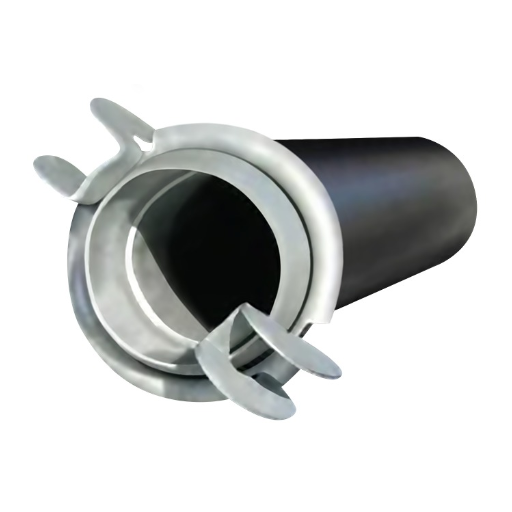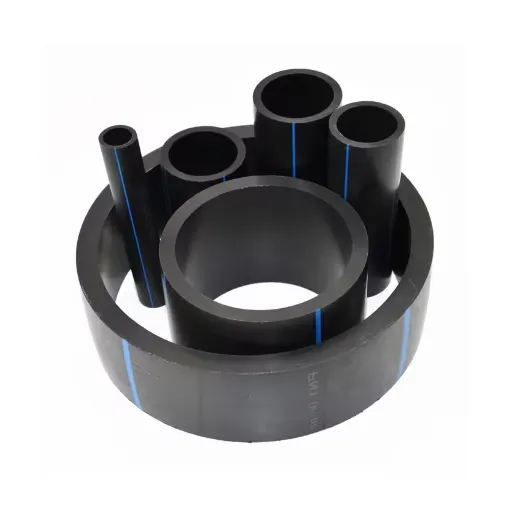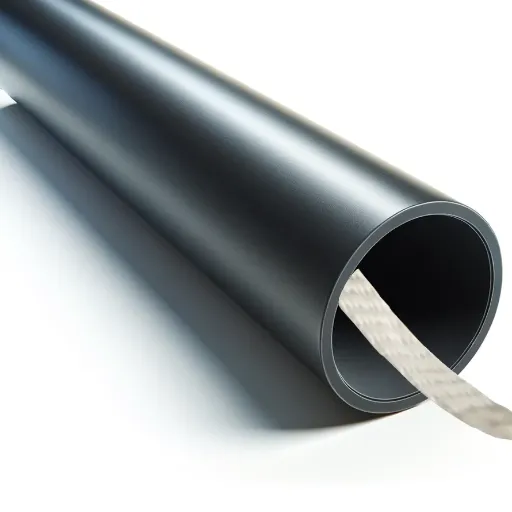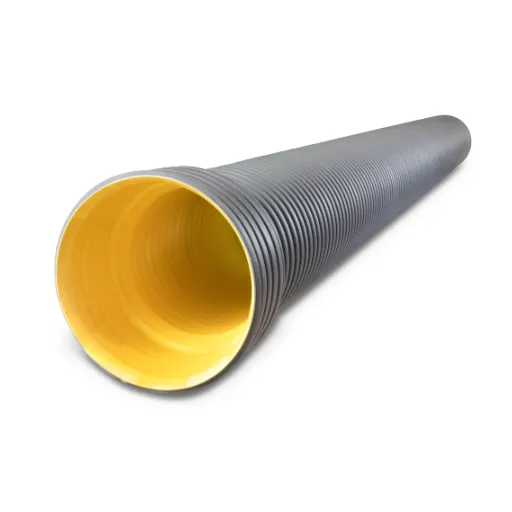High-Density Polyethylene (HDPE) pipes have quickly become the standard choice for various industries due to their unmatched durability, flexibility, and resistance to corrosion. However, the performance and longevity of HDPE piping systems depend heavily on the proper selection and execution of joining methods. With multiple techniques available, understanding the nuances of each method is critical to ensuring optimal performance, leak-proof connections, and adherence to regulatory standards. This guide will explore the most prevalent HDPE pipe joining methods, their applications, advantages, and technical considerations. Whether you’re a contractor, engineer, or project manager, this comprehensive overview will equip you with the knowledge to select the most suitable joining technique for your specific requirements, ultimately enhancing the efficiency and reliability of your piping systems.
What are the Different Joining Methods for HDPE Pipes?
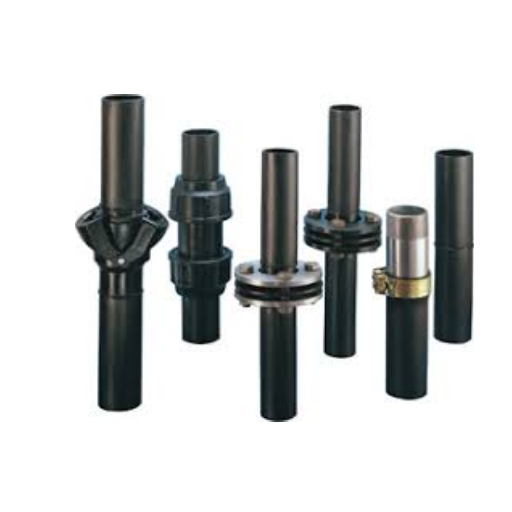
How is Butt Fusion Used to Join HDPE Pipes?
Butt fusion is one of the most dependable—and most common—techniques for joining two HDPE pipes for applications that require a connection to be both durable and leak-free. It includes heating the two ends of the HDPE pipes with a specialized heating plate until the material becomes pliable. After the requisite time, the ends of the pipes are pressed lightly, under carefully monitored pressure, which enables the molten substance to flow and fuse, forming a permanent bond.
Accuracy in the control of temperature, alignment, and application of pressure in butt fusion is vital in guaranteeing the joint will last long and be seamless. To minimize human error, most industrial-grade butt fusion machines come with automated monitoring systems which track these conditions.
The primary use for butt fusion is the efficiency at which the joints, in many cases installations, are interwoven to pipes. These resulting joints are then subjected to rigorous testing to ensure their strength is at least the same, if not more, than the pipe itself. Their intended purpose is for operation under exceptionally high pressure or critical applications, such as water distribution, gas pipelines, and rigid industrial systems. Unfortunately, fusion welding is limited in its use to identical materials, uniform size ranges, as well as surrounding field temperature and wind conditions to prevent inconsistent fusion in open settings.
What is the Process of Electrofusion in HDPE Pipe Joining?
Electrofusion is a unique method that employs fibrous coils fitted with electrodes to join HDPE (High-Density Polyethylene) pipes. When an electric current is passed through the coils, they produce heat. This heat induces the melting of the fitting’s inner surface and the pipe’s outer surface, leading to fusion. Strong and consistent bonds are created through precise, automated, and controlled electrofusion temperature and timing management processes.
The process starts with the final preparation stage, which includes cleaning the pipe ends to eliminate any contaminants, followed by scraping the pipe surface to enhance the efficiency of fusion by attaining fresh material. The next step entails accurate alignment of the pipes in the electrofusion fitting before engaging in the process. Material under pressure is melded together by the control unit through application of the correct volts and current to coils. Generation of local heat during this process, confined to coils, ensures efficient melting of materials. The joint becomes homogenous and attains the capability of enduring significant internal stresses and pressures after cooling.
This style is crucial for joining pipes in tight areas, or where alignment is difficult, like in repairs or installations in hard-to-reach locations. Electro-fusion guarantees great reliability in the applications of potable water, natural gas, and chemical transport, which require leak-proofing and long-standing strength. Contemporary technologies in electro-fusion systems, like automatic parameter recording and integration to quality traceability systems, have increased the accuracy and assurance of the process.
Explaining Socket Fusion in HDPE Pipe Systems
Among the variety of methods to join pipes, pipe socket fusion is the most prevalent in HDPE pipe systems because of its effective application in working with small diameter pipes used in water, gas and chemical systems. It operates by means of a thermal screwdriver, which fries both the pipe surfaces and the fitting surfaces. The wrench has two heaters, one for the male and one for the female, that are made to the exact measurements of the pipe, thus making the joint interface accurate and uniform.
Both the pipe’s outer surface and the fitting’s inner surface are first brought to the temperature required to melt them. After reaching and holding the specific temperature needed for bonding, the two parts are attached cooperatively, one of which is rotated. This joint will be sealed firmly so that no leaks will escape, simply clad in a fusion, with no other substances like glue or mechanical fasteners. This technique creates exceptionally strong and lasting connections able to perform in high-pressure conditions.
Developments in socket fusion technology have recently improved the accuracy and dependability of the process. Today’s equipment has digital temperature and timing controls, which allow operators to maintain thermal profiles and cut mistakes caused by people. Also, having data recording capabilities adds traceability and compliance with socket fusion industry standards and quality assurance protocols. This also improves the socket fusion technology’s reliability for critical applications in infrastructure projects alongside its low price.
How Does Heat Fusion Work in HDPE Pipe Joining?
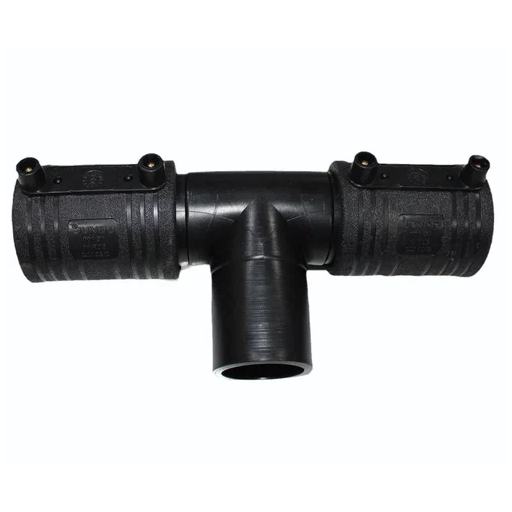
The Role of Heating in HDPE Pipe Connections
The joining of HDPE pipes, much like any other type of joining, requires the application of heat. This is done to change the molecular form of the polyethylene substance to make a uniform bond that is both strong and durable. The ends of the pipes are first placed in molding devices so that the proper temperature of between 400°F and 450°F is obtained. After heating, the pipes are brought outside and placed into specialized heating plates, which keep them at the required temperature grade. The device automatically activates when the surface of the pipes is about to melt and switches off when the set temperature is reached, so that the material does not degrade.
The polyethylene molecular chains can move and bind when the surfaces of the pipe are in a state of absolute liquid, and they are forced together with enough pressure to make a uniform bond. As is the case with almost all known technological processes, the accomplishment of the desired task depends on keeping to the proper soaking heat times and ensuring uniform heating over the joint at the interface. Many modern devices with advanced heating features have built-in reduction of mishandling due to digital temperature controls, whereby uniform application of heating also means that there is less chance of mistakenly changing the settings.
These improvements help a lot, but directly changing the bonds between the strength, duration, and the uniformity of the pipeline is directly up to the precision with which the heating element has been calibrated. The regulation and support outlined the warranty imposed a strict compliance with real-time monitoring, logging temperature values, self-adjusting thermometers set at boundary limits, supervision of trimming, while hiding the unattended powers gives control of the device. Under or overheating the device is set under the same standards that would otherwise cause damage to the joining bond without risk.
Steps Involved in Saddle Fusion
Saddle fusion is an important technique in attaching a saddle branch fitting onto a polyethylene (PE) pipe. When performed correctly, all steps of the process give a good and reliable joint that can survive operational pressures, changes in weather, and other factors. The following are some steps for the procedure’s outline:
- Preparation of Cuts: Inspecting the main pipe and the saddle fitting should be the first step to qualitatively ensure that these parts have no contamination, scratches, dents and other factors that can render them useless. A proper bond can be formed into the two surfaces of these parts if they are properly cleaned with a solvent or which removes dirt, grease, etc.
- Profiling of the Surface: A profiling cutter can be used to scrape the outer oxidized lower part of the main pipe to prepare it for saddle fitting attachment. This removal step enables fill materials to be fitted seamlessly without interference from oxidation.
- Alignment and Clamping: The next step includes attaching the saddle fitting to the saddle fusion machine, where the fitting is aligned in the exact position on the main pipe. Proper alignment is crucial. Even the tiniest alignment issues can cause faulty misfusions, leading to weld joint breakdowns.
- Heating Phase: The heating tool, with electric heating elements of exact specification, is placed between the pipe and saddle fitting.
- Fusion Process: After heating, the heating tool should be removed without disturbing the molten surfaces; the saddle fitting is to be brought into contact with the main pipe and consistent pressure is to be applied immediately. The pressure has to remain for the entire cooling phase so that molecular bonding can be achieved between the components.
- Cooling and Inspection: Relieve the pressure after the temperature has dropped to room temperature. Complains of relieving pressure during the holding phase or flexible movement till after the interval post-heat does not guarantee joint strength. After the components have cooled, a visual inspection can be done for the solidified fusion area of the joint. If a uniform bead is found, then the fusion was successful. Optionally, the bond integrity can be checked with a non-destructive or destructive test.
These steps, alongside the improvements in integration, such as the real-time monitoring of processes being validated, reduce the risk of failing to comply smoothly and thus resulting in the error of constituting a non-compliant joint. These methods promote adherence to the compliance of engineering requirements, resulting in the tenure and premature failure for these systems.
What are the Benefits of Using HDPE Pipes and Fittings?

Why Choose High-Density Polyethylene for Piping?
High-Density Polyethylene (HDPE) is considered a worthwhile option for piping systems because of its cost-effectiveness and excellent durability and flexibility. Its widespread acceptance as a piping system material can be attributed to its remarkable corrosion and chemical resistance, allowing it to withstand the transport of water, chemicals, and gas in a myriad of environmental conditions. Unlike steel and concrete, the traditional materials used in pipe manufacturing, HDPE pipes have a high tolerance to aggressive solvents and corrosive substances, which sustain their prolonged operational lifespan.
Apart from these, HDPE piping is more flexible and impact-resistant than traditional materials. Its flexural strength allows withstand ground movements and external loads without cracking, making it suitable for use in vulnerable geological regions. The thermal fusion of HDPE guarantees leak-free joining due to no gaps at the joints, which ensures system inefficiencies and water loss are minimized. Additionally, modern manufacturing technologies can produce large diameter HDPE pipes, which further enhance the installation and maintenance efficiency of the system while optimizing the hydraulic efficiency of the system.
The sustainability advantages concerning HDPE should also be considered. It can be easily recycled, and its production consumes less energy than that of metals, thus, HDPE helps achieve sustainable objectives in infrastructure projects. With the addition of modern technologies like monitoring systems, real-time assessment, and precision manufacturing, HDPE piping systems surpass the reliability and performance expectations set by international standards.
Advantages of Pipe and Fitting with HDPE Materials
The advantages of High-Density Polyethylene (HDPE) are numerous in the context of modern piping and fitting applications. Their inbuilt strength and resistance to cracking make them apt for high-pressure water and gas transporting systems. They are considered non-reactive chemicals, which makes them resistant to harmful chemicals like acids, salts, and alkaline compounds. Using HDPE materials greatly prolongs service life due to their corrosion resistance.
Another notable characteristic of HDPE is its flexibility, which allows it to be bent and installed in uneven terrains or areas where subsoil conditions shift. The reduction of joints as well as the absence of fittings lowers the chances of leaks and system failures. The reduction of friction caused by the smooth inner surface of HDPE pipes enables efficient hydraulic functioning along with reducing the energy used during fluid transport.
The absence of mechanical connectors serves as an additional advantage because it yields a single-pipeline system not subjected to seams that would otherwise become a sore point in the pipeline’s ability to endure changes in temperature and pressure while being easy to maintain. Apart from all these features, the lightweight nature of HDPE simplifies the transportation and on-site handling, which significantly reduces installation costs, even accelerating the overall timeline of a project.
In terms of ecology, HDPE is fully recyclable, supporting environmental construction. Its manufacturing emits less carbon dioxide than conventional piping materials, further HDPE’s alignment with ecological efforts toward GHG emissions reduction. Combined with advanced monitoring technologies, flow control and data analytics on HDPE systems can be performed in real-time and automatically, maximizing business operational efficiency and compliance with industry regulations. All these qualities combine to make HDPE outstanding in modern infrastructure development.
How to Ensure Proper Pipe Connection in HDPE Systems?
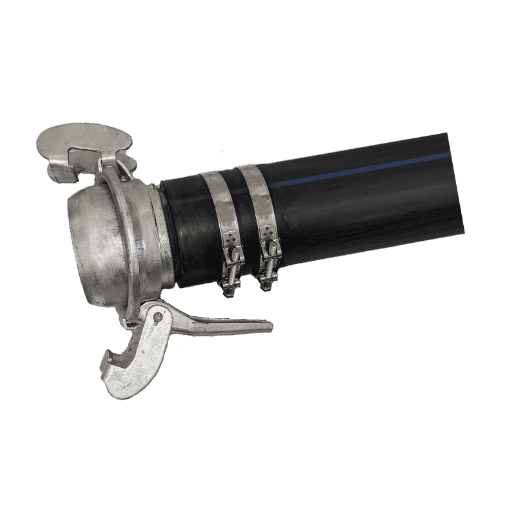
Importance of Pipe Surface Preparation
Correct surface preparation is fundamental to its longevity and dependability when it comes to connecting HDPE pipes. Preparation mainly involves cleaning, drying, scraping, and checking the surfaces of the pipe to remove foreign materials like filth, oil, and water that may be present and cause issues in the fusion processes. Remove any form of obstruction to provide a firm and lasting enhanced joint strength and lower the joint’s failure rate, especially in high-pressure or high-temperature scenarios.
Before performing fusion, all debris has to be cleaned using the approved cleaning agent or mechanical cleaning tools. In addition, the ends of the pipes must also be dried to avoid moisture ingress, which results in weak bonds or hinders electrofusion coupling. Surface offset due to some rounding feature or improper preparation also leads to a reduction of integrity on the joint. Regular inspection for scratches, gouges, or any damage is very important because these defects greatly affect the structural integrity of the HDPE material.
In compliance with industry standards, maintenance ensures that appropriate methods are employed during the surface treatment processes. These standards classify regulations for mitigating errors, optimally improving the system’s lifecycle, and maintaining compliance with safety procedures. The application of modern technologies for accuracy and quality control, such as non-contact surface defect sensors, is an additional way that these prepare workflows. By enforcing strict preparation guidelines, the operational and functional effectiveness of the HDPE systems is greatly enhanced.
Key Considerations for Pipe Diameter and Wall Thickness
Determining the diameter and wall thickness of the pipes is vital for the performance of HDPE piping systems. Attention must be given to factors such as internal pressure ratings, external loads, and the environmental settings to which the pipes are exposed.
- Pressure Ratings and Standards: The wall thickness of the pipe must follow the pressure rating guidelines set by industry standards as these standards specify focusing on fluid properties, operating temperatures, and fluid surge pressure.
- Load-Bearing Capability: Wall thickness is significant when it comes to the static and dynamic loads, as well as for soil and traffic pressure for buried installations. Under an array of different conditions, FEA is used to evaluate the load-bearing capacity of the structures.
- Thermal Expansion and Contraction: Given the thermal expansion nature of HDPE material, the pipe’s diameter and wall thickness need to accommodate temperature changes. Expansion joints may also be added to further control the effect.
- Flow Efficiency: The internal diameter, volumetric flow rate, and hydraulic performance are tied together very closely. The calculations from the Darcy-Weisbach equation or Hazen-Williams coefficient are applied to provide the most efficient pipe sizing in terms of head loss and energy consumption.
- Temperature and Chemical Resistance: When dealing with corrosive chemicals or high temperature application, the selection criteria might specify thicker walls or further material improvements to guarantee that the pipeline keeps its mechanical properties for the entirety of its operational life.
Combining these considerations with sophisticated industry tools allows engineers to proactively meet industry requirements, enabling the design of HDPE piping systems optimized for the best performance and durability from the very beginning.
What are the Applications of HDPE Pipes in Various Industries?
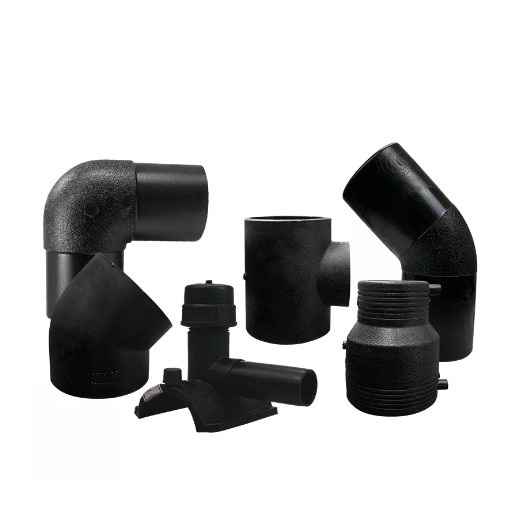
Using HDPE Pipes in Water Supply Systems
The application of Polyethylene pipes with high density (HDPE) is wide-ranging, especially in water supply systems, due to their remarkable resistance to wear, corrosion, flexibility, and overall durability. As a result, these pipes are perfect for carrying potable water because of strict health regulations meant to protect human health. Moreover, HDPE pipes are constructed to endure high pressure, which makes them appropriate for use in both rural water supply systems and municipal water distribution networks.
Another key benefit of using HDPE pipes is the ability to withstand environmental stress cracking. With these features, these pipes can perform under severe operating conditions such as high temperature variations and difficult land topographies. Moreover, with their fusion-welded fittings, these pipes create a leakless system that improves conservation efforts, lowers maintenance costs, and protects the environment. The low weight of these pipes increases efficiency, reduces costs, and simplifies transportation and installation.
The latest development, with new resin materials and better manufacturing techniques, has improved the performance characteristics of HDPE piping. For example, new HDPE pipes have better ultraviolet radiation resistance, which increases their durability in outdoor settings. These pipes have begun to be used in a variety of highly demanding situations such as irrigation systems, desalination plants, and urban development projects, further solidifying their position as an essential component of hydrosystems across all industries.
Industrial Uses of Plastic Pipe Materials
Due to their excellent performance, lightweight plastic pipe materials like polyethylene (PE), polyvinyl chloride (PVC), and polypropylene (PP) are used in various industries. They are corrosion resistant, even in chemically hostile environments, and wastewater treatment plants or chemical processing facilities. These types of pipe also endure high pressure and extremly high or low temperature which makes them essential for transporting gas, liquid, and solids over long distances.
The specific heat of plastic pipes resists energy loss during heating or cooling, while their lightweight construction reduces transportation and installation costs. Additionally, modern design processes allow for enhanced tailor-made designs, such as multilayered pipes with increased strength and leak-proof seals. Enhanced durability and increased efficiency enable wider adoption in oil and gas, mining, agriculture, as well as municipal water management.
These changes have led to an industry-wide reliance on plastic pipes. These developments are largely supported by an increased demand for sustainable and recyclable construction materials, urbanization, and infrastructure upgrades.
References
Frequently Asked Questions (FAQs)
Q: What are the main methods for joining HDPE pipes?
A: The main methods for joining HDPE pipes include butt welding, electrofusion, and mechanical fittings. Each method offers a reliable solution for HDPE pipe joining depending on the application and installation requirements.
Q: How does butt welding work in HDPE pipe joining?
A: Butt welding involves heating the two ends of the pipe to a molten state and then pressing them together to form a fusion joint. This method is commonly used for joining HDPE pipes due to its strong and permanent bond.
Q: What are the benefits of using HDPE pipes in construction?
A: HDPE pipes are used widely due to their high durability, resistance to corrosion, flexibility, and ease of installation. These benefits make them an excellent choice for various industrial and residential applications.
Q: Can polyethylene fittings be used for joining HDPE pipes?
A: Yes, polyethylene fittings are often used in conjunction with HDPE pipes to create a seamless and secure connection. These fittings are designed to complement the properties of HDPE pipes.
Q: What is the process of joining HDPE pipes using compression fittings?
A: The process involves inserting the pipe into a fitting and tightening it to create a seal. This method is typically used for temporary or easily accessible installations where ease of disassembly is desired.
Q: What types of HDPE pipes are available for different applications?
A: Types of HDPE pipes vary based on diameter, pressure rating, and material grade. These variations allow HDPE pipes to be customized for specific uses, such as water supply, gas distribution, and industrial fluid handling.
Q: How do heat fusion methods differ from mechanical methods for joining HDPE pipes?
A: Heat fusion methods, including butt fusion and electrofusion, create a fusion joint by melting the pipe surfaces. Mechanical methods, such as compression fittings, physically clamp the pipe and fitting together without heat.
Q: What considerations are important for the joining process of HDPE pipes?
A: Important considerations include ensuring the external surface of the pipe is clean and properly aligned, selecting the appropriate method for joining HDPE pipes, and adhering to manufacturer guidelines to ensure a reliable and durable connection.
Q: How does the joining process impact the longevity of HDPE pipe installations?
A: The joining process impacts longevity by ensuring a watertight and robust connection. Properly executed joints, whether through butt welding or other methods, minimize the risk of leaks and failures.
Q: Why is butt fusion preferred for certain HDPE pipe installations?
A: Butt fusion is preferred for its ability to create a strong, seamless joint that matches the strength of the pipe material itself. This method is especially favored in underground and high-pressure applications where reliability is critical.



